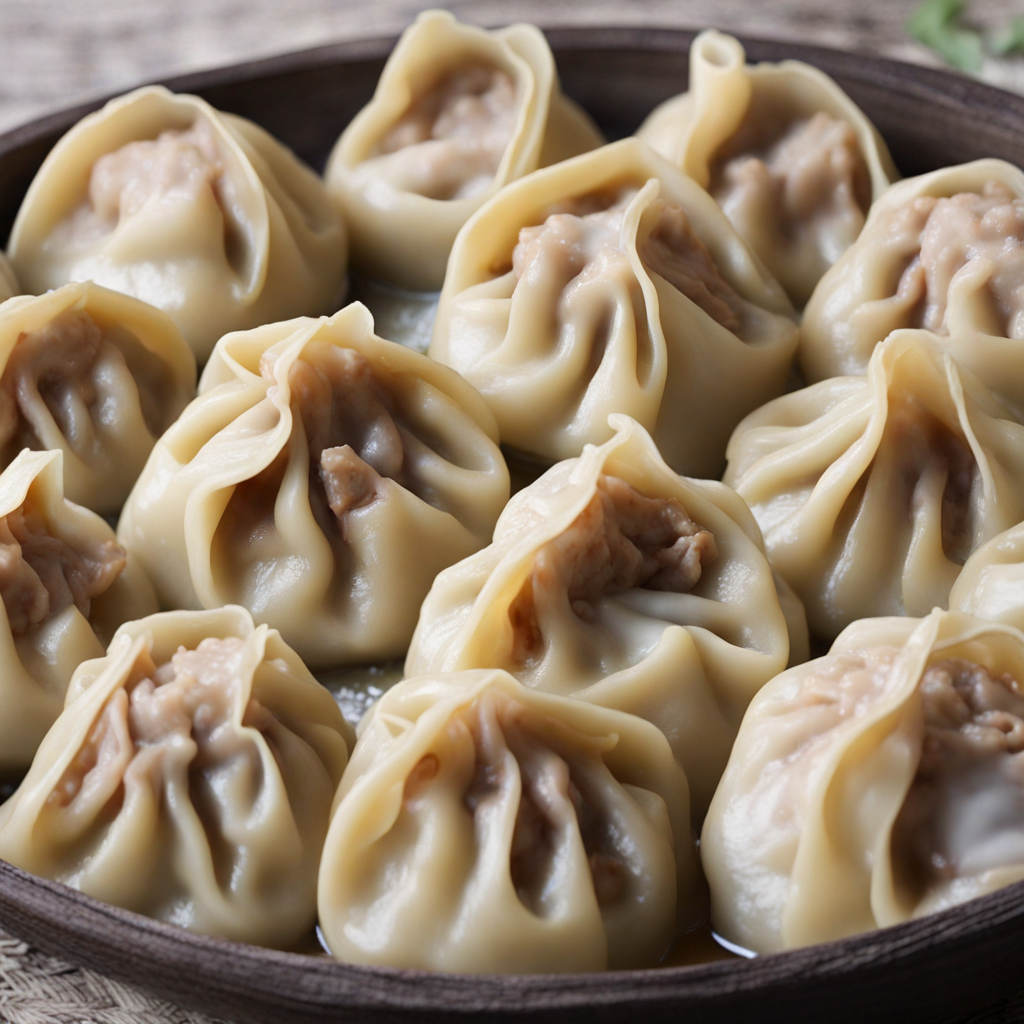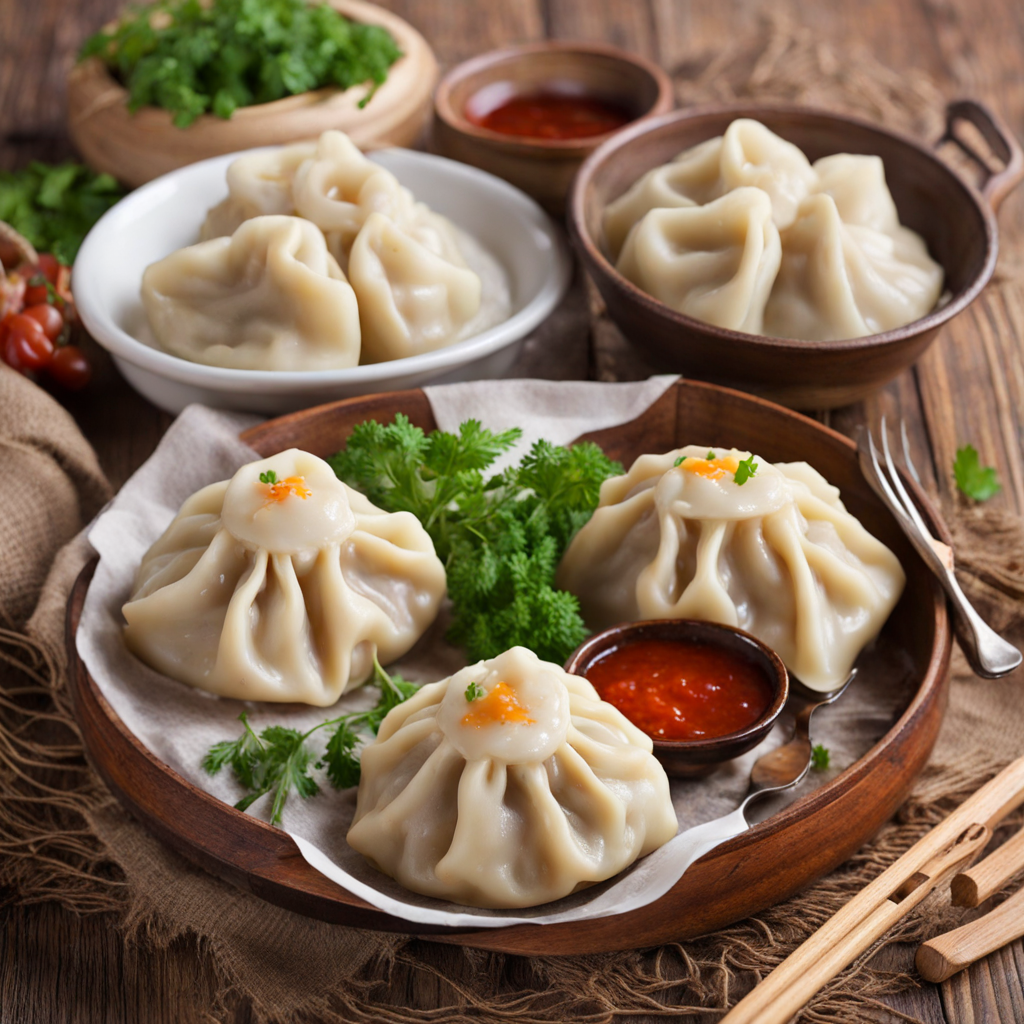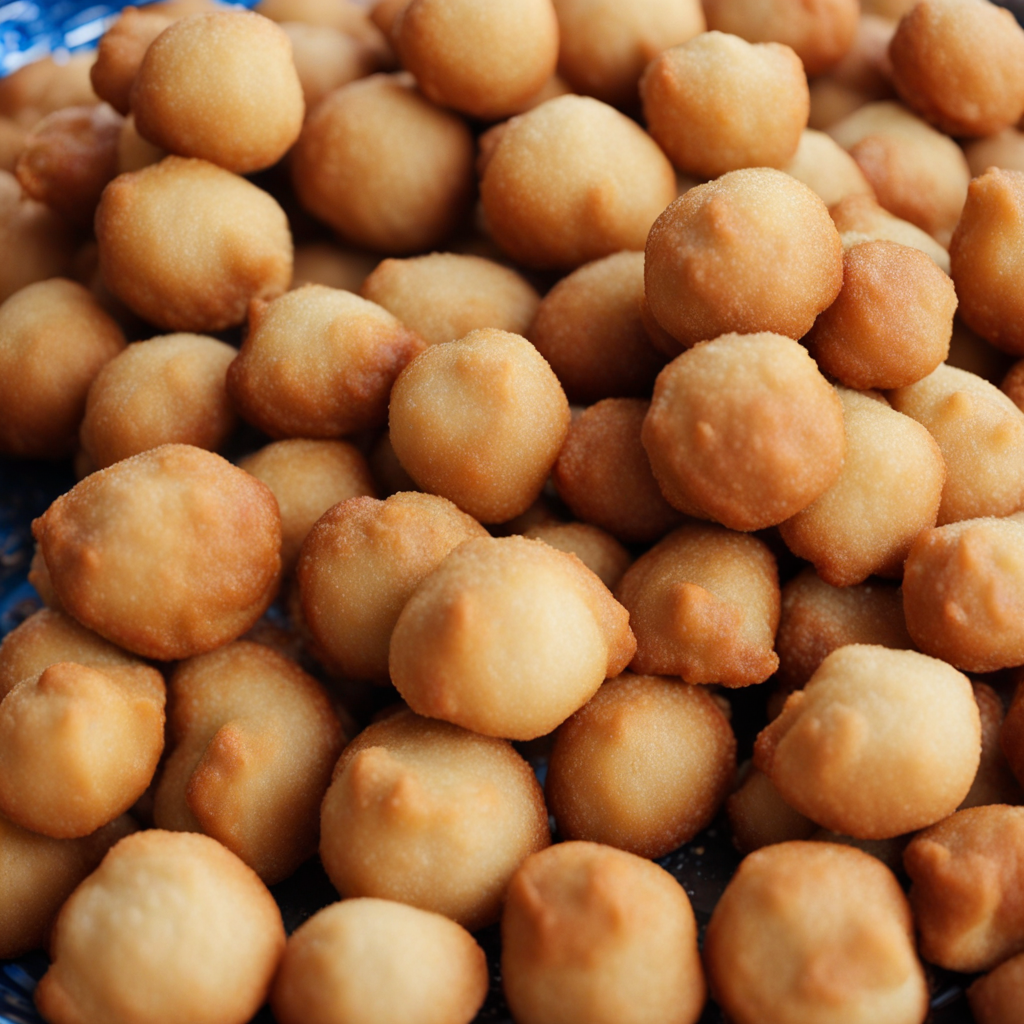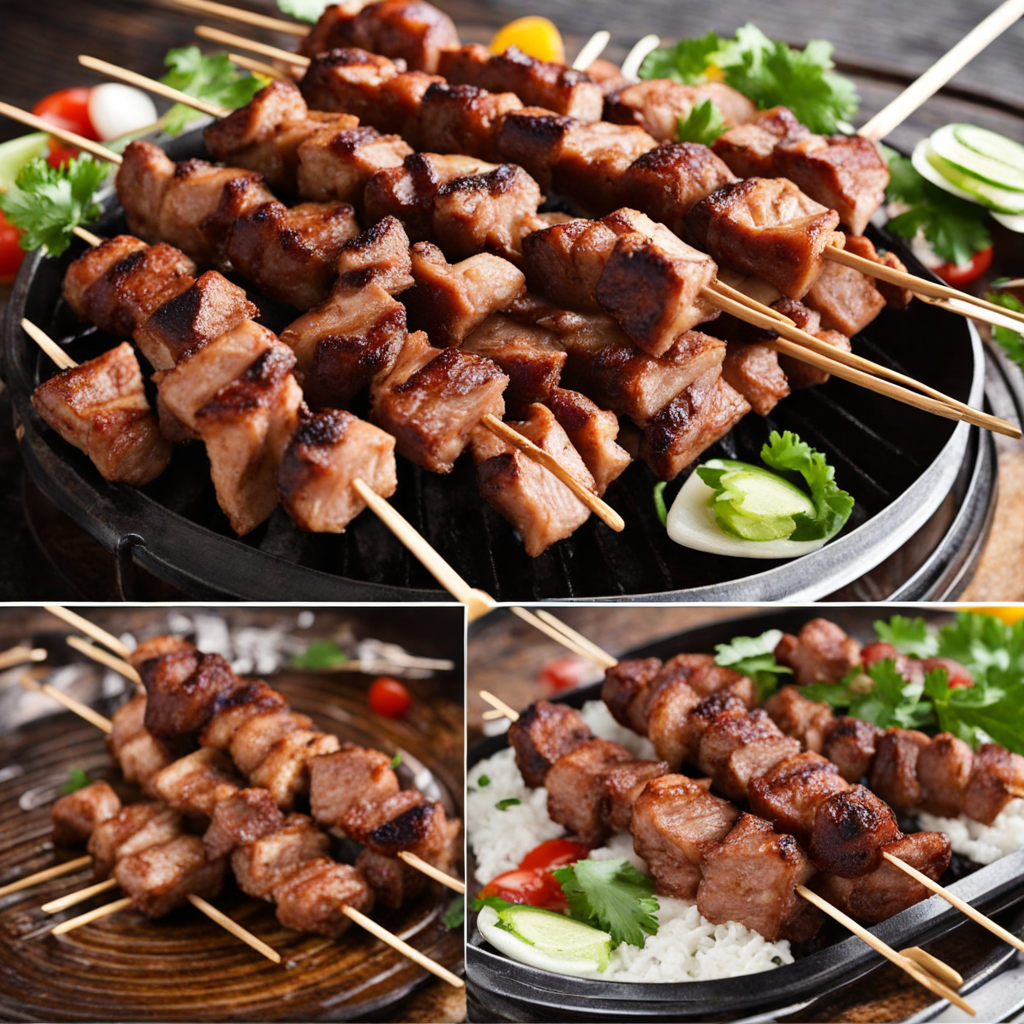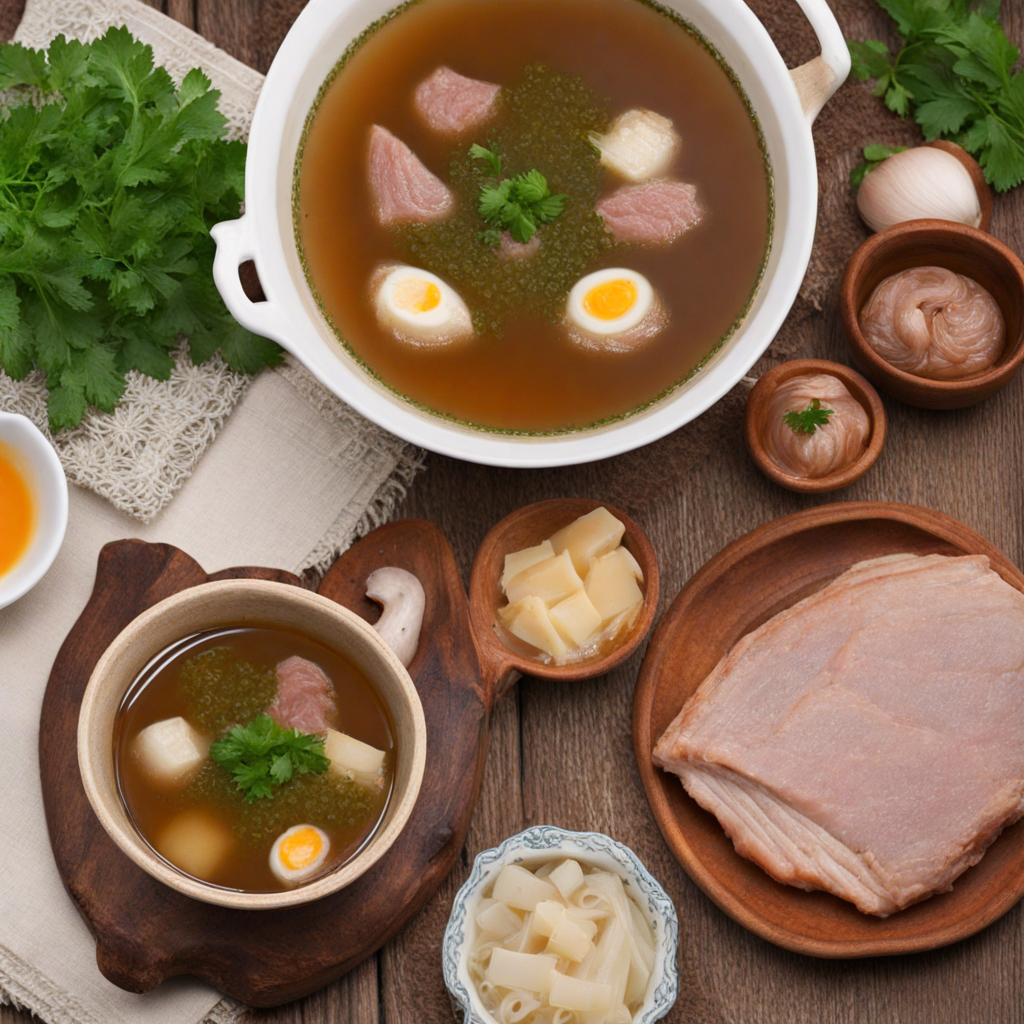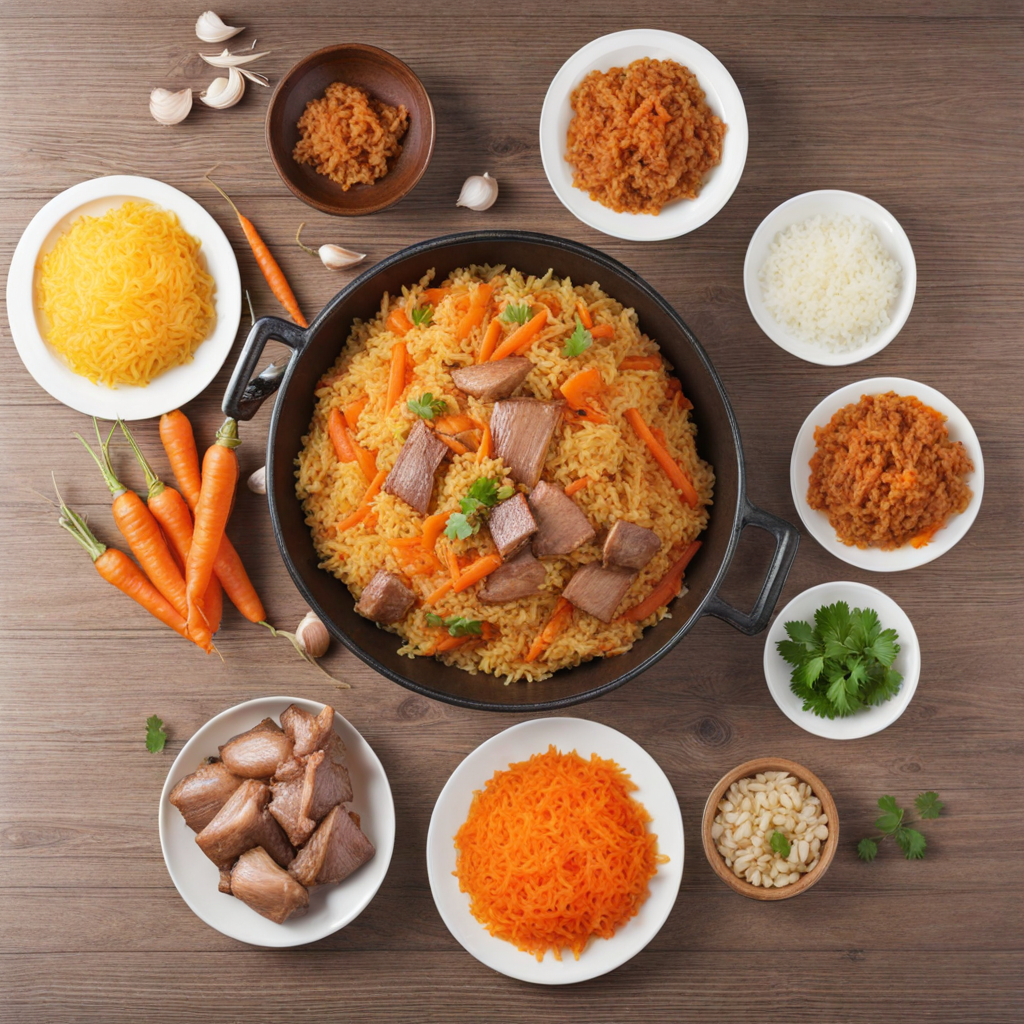Manty
Manty are a traditional Kazakh dish that embodies the rich culinary heritage of Central Asia. These delicious dumplings are typically filled with a savory mixture of minced meat, often lamb or beef, combined with finely chopped onions and a blend of spices. The dough is made from simple ingredients such as flour, water, and salt, which are kneaded to create a pliable texture perfect for encasing the flavorful filling. The result is a comforting, hearty dish that showcases the essence of Kazakh hospitality and home cooking. The cooking method of manty is just as important as the ingredients. They are usually steamed in a special multi-tiered steamer called a mantovarka, which allows the dumplings to cook evenly while retaining their moisture and tenderness. The steaming process enhances the flavors of the meat and spices, making every bite a delightful explosion of taste. Often served with a dollop of sour cream or a tangy dipping sauce, manty can also be garnished with fresh herbs like dill or coriander, adding a refreshing note to the dish. As you take your first bite of manty, you’ll experience the tender dough giving way to the juicy, aromatic filling, creating a satisfying contrast in textures. Each dumpling is a celebration of flavors, from the rich, meaty center to the delicate, slightly chewy exterior. Manty is not just a meal; it’s a culinary experience that invites you to explore the unique flavors of Kazakhstan, making it a must-try for any food enthusiast looking to expand their palate.
How It Became This Dish
Origin of Мәнті Мәнті, a traditional dish from Kazakhstan, has deep roots in Central Asian cuisine, with its origins often attributed to the nomadic cultures that have thrived in the region for centuries. Thought to have originated from the Turkic word for “dumpling,” the dish reflects the culinary practices of various Turkic peoples, including the Kazakhs, Uzbeks, and Kyrgyz. It is believed that the preparation of steamed dumplings, similar to what we now know as мәнті, dates back hundreds of years, influenced by the migration patterns and the intermingling of different cultural practices across the vast steppes of Central Asia. The basic concept of cooking meat and vegetables wrapped in dough is not unique to Kazakhstan; rather, it is a common theme seen throughout various cultures in Asia and beyond. However, the Kazakh version of мәнті has its own distinctive characteristics, often featuring lamb or beef seasoned with spices and wrapped in a thin layer of dough. The cooking method, typically steaming, is also representative of the nomadic lifestyle, where portable cooking methods were essential for traveling herders. \n\n Cultural Significance In Kazakh culture, food is not merely sustenance but an essential aspect of social life and identity. Мәнті holds a special place within this framework, often served during significant gatherings and celebrations. It is a dish that embodies hospitality, with hosts typically preparing large quantities to share with guests. The act of making мәнті is often a communal affair, where family members gather to prepare the dough and fill the dumplings, strengthening family bonds and cultural traditions. The dish symbolizes the rich culinary heritage of the Kazakhs, reflecting their nomadic past and the importance of communal eating. It is not just about the food itself; it represents the values of sharing and generosity that are integral to Kazakh hospitality. During special occasions like weddings, birthdays, and holidays, serving a large platter of steaming hot мәнті is a way of honoring guests and showcasing the host's culinary skills. \n\n Ingredients and Variations Traditionally, the filling for мәнті consists of minced meat, typically lamb or beef, mixed with onions, garlic, and a variety of spices such as black pepper and cumin. The dough is made from simple ingredients: flour, water, and salt, rolled out thinly and cut into squares or circles. These ingredients are not just staples in Kazakh cuisine but also reflect the agricultural practices and livestock rearing that are prominent in the region. Over time, various regional variations of мәнті have emerged, with each community adding its own flair. For instance, some might incorporate pumpkin or potatoes into the filling, making the dish more versatile and catering to different tastes. In urban areas, it is common to find innovations in the preparation and presentation of the dish, with some chefs experimenting with flavors and fusion techniques, while still paying homage to traditional practices. \n\n Cooking Techniques The method of cooking мәнті is of great importance, as it not only affects the flavor but also the texture of the dumplings. Traditionally, they are steamed in a special device called a "manti steamer," which resembles a tiered pot. The steam envelops the dumplings, ensuring they cook evenly and retain their moisture, resulting in tender and flavorful bites. This technique is reflective of the practicality required by a nomadic lifestyle, where cooking methods needed to be efficient and effective. In contemporary settings, while the traditional steaming method remains popular, variations such as frying or baking the dumplings have gained traction, especially among younger generations. These adaptations demonstrate the dish's evolving nature and its ability to integrate into modern culinary practices without losing its cultural significance. \n\n Modern Popularity In recent years, Kazakh cuisine, including мәнті, has gained recognition on the global stage. The increasing interest in ethnic and regional cuisines has led to a resurgence of traditional dishes, with many chefs and home cooks taking pride in preserving and promoting their culinary heritage. This revival is not only seen in Kazakhstan but also in diaspora communities around the world, where Kazakh immigrants have introduced their culinary traditions to new audiences. Restaurants serving traditional Kazakh dishes, including various forms of мәнті, have begun to appear in major cities globally, offering a taste of Central Asian culture. Food festivals and cultural events also play a crucial role in celebrating and sharing Kazakh cuisine, allowing for the exploration of its history and significance through food. The growing popularity of Kazakh cuisine has sparked a renewed interest in cooking classes, where individuals can learn the art of making мәнті and other traditional dishes. \n\n Conclusion and Future Prospects As the world becomes increasingly interconnected, the future of traditional dishes like мәнті lies in their adaptability and the ability to resonate with new generations. The dish’s rich history and cultural significance provide a strong foundation for its continued evolution. While the core ingredients and traditional methods remain vital, the incorporation of contemporary cooking techniques and flavor profiles may pave the way for a new era of interpretation. In conclusion, мәнті serves as a delicious ambassador of Kazakh culture, bridging the past and present while fostering connections among people through the universal language of food. As culinary enthusiasts continue to explore and celebrate this traditional dish, its legacy will endure, ensuring that future generations appreciate its history and significance in the vibrant tapestry of Central Asian cuisine.
You may like
Discover local flavors from Kazakhstan


